More and more people are cycling to work. Mobility solutions expert Philippe Kahn explains how and why.
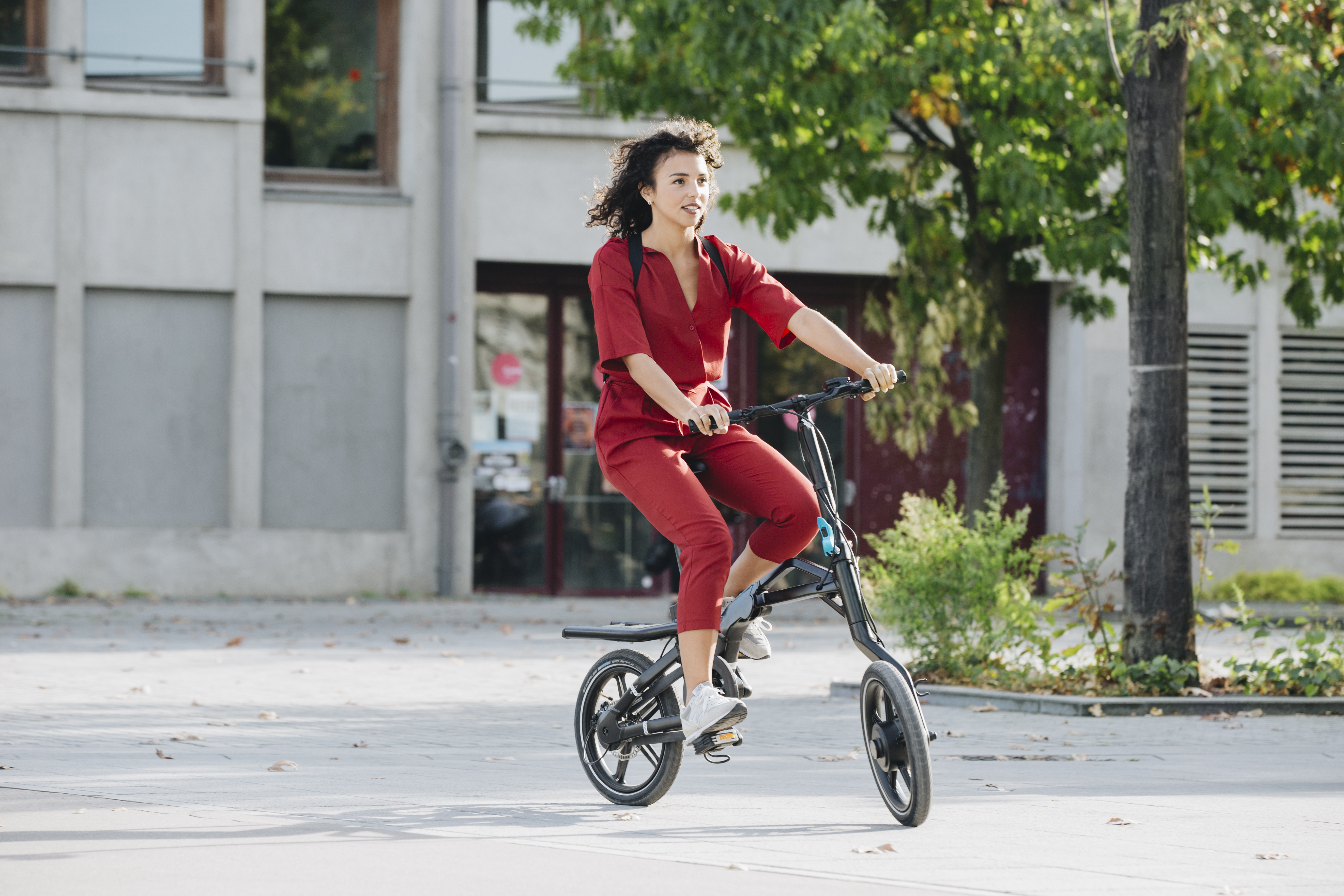
People are changing the way they travel to limit their environmental impact: behaviours are starting to shift, and the use of bicycles is rising, including and especially for travelling to and from work. We spoke to Philippe Kahn, Mobility Solutions Expert at Arval BNP Paribas Group, about these developments.
Two out of three Belgians use soft mobility, mainly bicycles
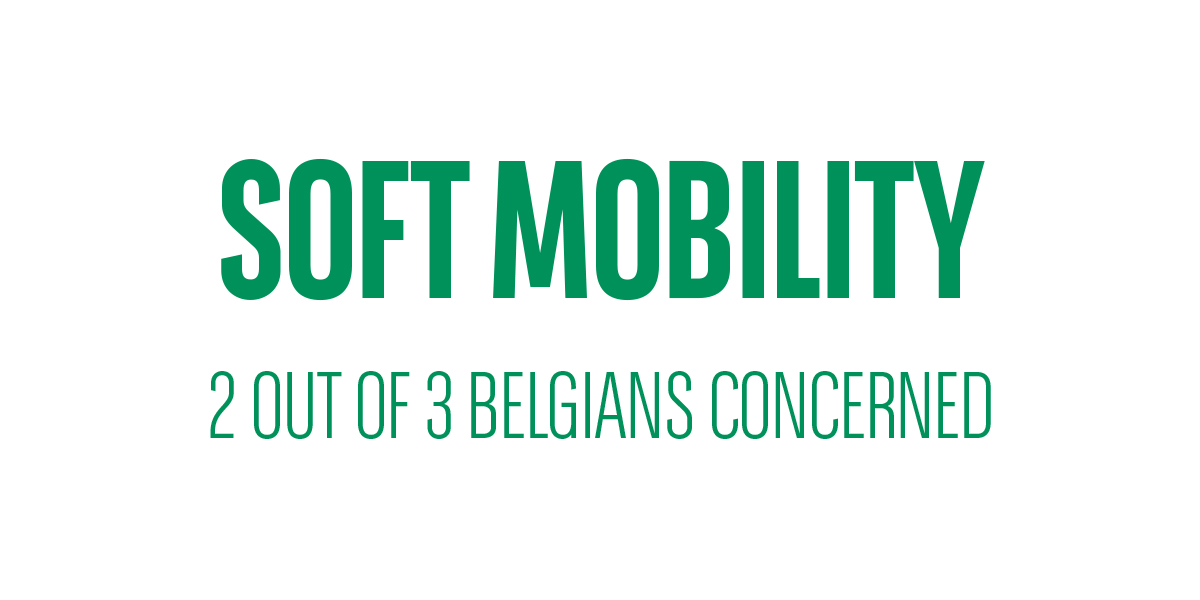
According to Profacts’ “Mobility Tomorrow & Beyond” survey, two out of three Belgians have adopted soft mobility. "But the biggest change is the increasing use of bicycles for business travel and commuting. People are also using bicycles more on the school or nursery run, facilitated by the arrival of electric cargo bikes on the market," says Kahn.
A favourable regulatory framework
But what are the reasons for the increased use of bicycles for business travel? “Let’s first take a look at how the regulatory framework has changed," says Kahn. "In Belgium, the creation of the federal mobility budget has made alternative ways of travelling attractive for all employees. The budget makes it possible to choose a comfortable company bicycle as part of a tax-friendly salary package. Moreover, this mobility budget can even be used to cover housing costs if you work from home more than half the time or if you live within 10 km of your place of work. So instead of having a company car, people can choose to have a combination of an electric bicycle and a contribution to their housing costs. Furthermore, two measures effective from 1 May 2023 should reinforce this trend: the bicycle allowance for commuting is increasing to €0.27 net per km travelled, and all Belgian employees will be entitled to this allowance. In practical terms, this means that those who choose to cycle for these journeys will be substantially rewarded.”
Investment in public infrastructure is paying off
Another important factor in the increased use of bicycles is the development of road infrastructure.
Philippe Kahn: "One factor that can convince people to cycle to work is the certainty of a safe journey. A few years ago, cycling to work in Brussels, for example, could be dangerous. But today, cycling infrastructure is making these journeys increasingly safe, in particular thanks to the cycle motorways on which only bicycles can travel. Infrastructure investments are now also happening in the rest of Belgium, not just Flanders and its major cities. In recent years, Brussels has undergone significant changes, and things are also starting to move in Wallonia.”
Half of all Belgians live within 15 km of their place of work
Distance from the workplace is also crucial in determining how attractive cycling is. "One in two Belgians lives within 15 km of their workplace, a distance that you can easily cycle," adds Kahn. "Along with the Improved infrastructure, this means that cycling to work is a realistic option for many Belgians. And the €0.27 per kilometre allowance will be an added incentive for them to make the change.”
What is the federal mobility budget?
This scheme allows the budget initially allocated to an employee’s company car to be divided into three pillars within a salary package. These three pillars are:
- a car with no or low CO2 emissions (less than 95 g/km), such as an electric vehicle;
- sustainable means of transport, including cycling, but also in some cases this pillar can also cover housing costs, such as rent or mortgage repayments;
- the balance of the mobility budget, which is paid in cash.
The mobility budget makes it possible, for example, to replace a combustion-powered company car with an electric car and a bicycle, with the same tax-friendly terms for both the employer and the employee.
78% of leased company bicycles are electric
To meet the needs of companies and their staff, Arval is now offering bicycle leasing. This full-service lease covers maintenance, breakdown assistance, insurance and repairs, as is traditionally the case for a car. Philippe Kahn points out some very significant trends in this area: "60% e-bikes and 18% speed pedelecs: in total, 78% of our leased company bikes are electric.
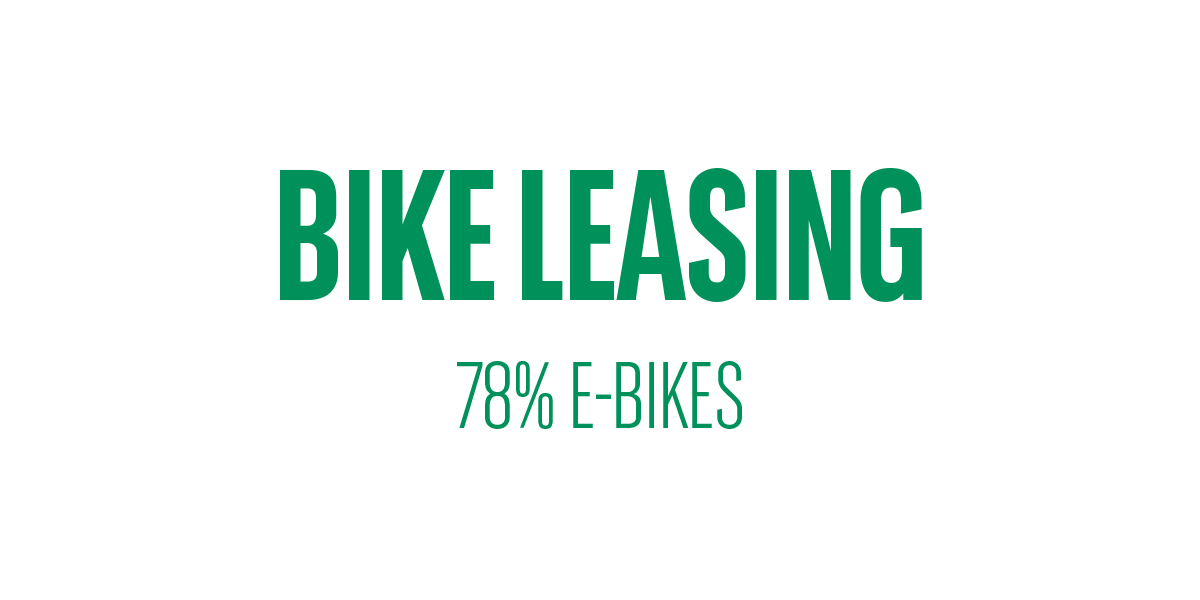 High-end bicycles costing several thousand euros, such as electric cargo bikes, are also highly successful, which is probably due to opportunity: the mobility budget or employer “cafeteria plan” benefits packages are making it possible for people to acquire these bikes. But it may also be a consequence of Belgium’s specific tax regulations: the more expensive the bicycle, the more significant the tax incentive. Another interesting observation is that when a bicycle replaces a car, it’s usually the family’s second car. So we’re not yet seeing any radical replacement of cars by bicycles, but the emergence of the company bicycle is definitely reducing the total number of kilometres travelled by car.”
High-end bicycles costing several thousand euros, such as electric cargo bikes, are also highly successful, which is probably due to opportunity: the mobility budget or employer “cafeteria plan” benefits packages are making it possible for people to acquire these bikes. But it may also be a consequence of Belgium’s specific tax regulations: the more expensive the bicycle, the more significant the tax incentive. Another interesting observation is that when a bicycle replaces a car, it’s usually the family’s second car. So we’re not yet seeing any radical replacement of cars by bicycles, but the emergence of the company bicycle is definitely reducing the total number of kilometres travelled by car.”
Digital applications: shifting up a gear
Lastly, Kahn points to another factor that could encourage more people to take up cycling to work. "I think that technology, and in particular digital applications, can make a big difference. We can expect strong growth in the market for apps dedicated to commuting by bike. The business model for on-the-go electric bike rental is already based on a smartphone app. So imagine the success of an application that gives you a safe and bicycle-friendly route for travelling to and from work, and the boost that this could give to this type of travel," concludes Kahn.
06.05.2024
Ecosteryl decontaminates medical waste
Thanks to its low-pollution solutions and the arrival of new investors, the Mons-based company has every intention of continuing to grow. Discover more about this inspiring success story.
Eradicate the environmental and health problems associated with medical waste on a global scale: Ecosteryl's ambitions match the technical expertise of this Mons-based company. Founded in 1947, its core business was equipment and machinery for the mining industry. Around twenty years ago, it completely reinvented itself by specialising in the treatment of (potentially) infectious waste from the healthcare sector.
A global player with high-profile clients
Today, Ecosteryl is a globally recognised player in its sector, exporting 100% of its production to more than 65 countries. Its customers? Hospitals, of course, but also organisations in the waste recycling sector and international institutions such as the World Health Organisation, the World Bank and the United Nations, as well as cities and states. The company employs around forty people and has an annual turnover of over €20 million.
Medical waste, a critical public health issue
Syringes, dressings, masks, sharp instruments... 15% of medical waste is considered hazardous and therefore requires special treatment. Given that a single hospital bed produces between 0.5 and 3 kg of this waste every day, it's easy to imagine the scale of the problem. The infectious, toxic and sometimes even radioactive risks associated with hazardous medical waste are far from minimal: among other things, it can trigger or accelerate a pandemic, and even give rise to new diseases. Decontamination and recycling of this waste, the only solution to eliminate this health risk, is therefore a global public health issue.
An environmentally responsible process
Direct incineration or autoclaving: these are the two methods used by Ecosteryl's competitors to decontaminate hazardous medical waste. The problem is that these processes are far from being environmentally neutral. Incineration causes significant CO2 emissions and harmful emissions, such as dioxins, and is also energy intensive. And autoclaving requires large amounts of water and energy, again with significant environmental consequences.
It is in this area of the environmental footprint that Ecosteryl has made a difference, thanks to a technological breakthrough developed in collaboration with the University of Paris. The decontamination and recycling process uses microwave and dry heat technology to disinfect hazardous waste. The decontaminated waste is then shredded to reduce its volume, after which it can be processed in the same way as non-hazardous waste. Or better still, it can sorted and recycled.
This process requires very little electricity to operate, and its environmental performance compared to incineration and autoclaving is incomparable in terms of emissions and water consumption.
Too much plastic in medical waste: recycling instead of prevention
Single-use plastic products, equipment and utensils are a fact of life in hospitals. In many cases, this single use is justified, for example for syringes. The problem arises when this waste is directly incinerated. But thanks to pre-treatment, decontaminated and dried waste can be given a second life.
Until now, there has been no machine for this final stage. Ecosteryl's latest development, R-Steryl, fills this gap. It is a unique sorting centre. Placed after the decontamination machines, it can sort decontaminated waste and recycle up to 80% of it. The major players in waste collection and treatment know that recycling is and will be a real challenge in the coming years. Ecosteryl is also positioning itself as a key player in this field, and is investing in a number of analyses to this end.
Private equity to accelerate development
Despite its size in the medical waste decontamination sector, Ecosteryl has no intention of slowing down. The company intends to continue and accelerate its international growth, and welcomes new investors: BNP Paribas Fortis Private Equity, Wallonie Entreprendre and IMBC, an investment company focused on the Mons, Borinage and Centre regions. Philippe Dufrasne, Chairman of Ecosteryl, comments: “With these new shareholders, we have found the right partners to help us stay ahead of the game and achieve our long-term goals, particularly in terms of ESG (Environmental, Social and Governance) performance.”
A priority to invest in the transition of companies
BNP Paribas Fortis is also enthusiastic about this new project.
“We are particularly proud to support this company, which has developed a unique expertise in the production of cutting-edge equipment specialised in the environmental field. Over the years, Ecosteryl has succeeded in expanding worldwide in a niche market at the intersection of environmental and health issues. This investment is fully in line with our ambition to invest €1 billion in venture capital by 2025, focusing on funds and companies that respect environmental, social and governance criteria,” explains Raf Moons, Head of Private Equity at BNP Paribas Fortis.
03.05.2024
Transporting and securing energy across Europe
The Princess Elisabeth Island, is the world's first artificial energy island for transporting offshore wind power to land. A combination of innovation, technology and biodiversity conservation.
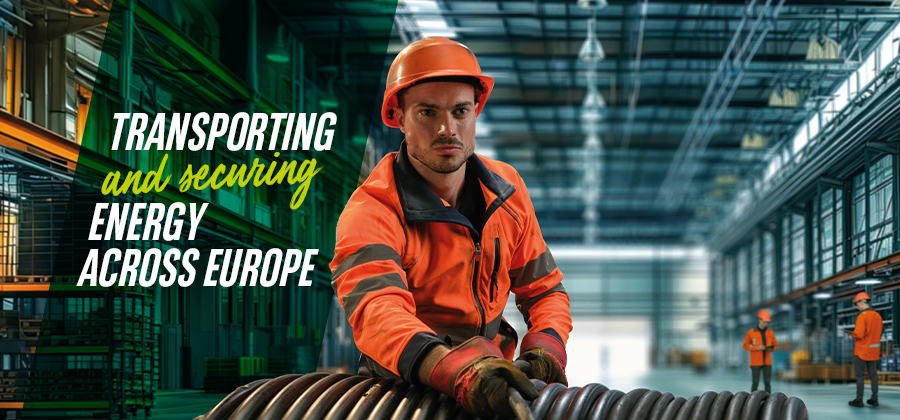
8,802 km: that's the length of all the onshore and offshore power lines and cables managed by Elia Transmission in Belgium. As the operator of the Belgian high-voltage grid, Elia keeps the lights on by matching electricity generation and consumption at all times.
Artificial energy island
Grid operator Elia has just started to work on one of the most challenging projects in its history: the Princess Elisabeth artificial energy island. It will be located in the middle of the 285km2 Princess Elisabeth wind zone. This is the second offshore wind zone in the Belgian North Sea that has yet to be fully built. With a capacity of 3.5 gigawatts, the new wind farms will produce electricity equivalent to the annual consumption of 3.5 million households.
Catherine Vandenborre, CFO of Elia: “The Princess Elisabeth Island is a vital link in the successful energy transition in Belgium. The island has a dual function. First, it will bring electricity from the new offshore wind farms to the mainland. And then from 2030, the island will also be connected to wind farms in other countries with which electricity can be exchanged. This will give our country access to cheap and renewable energy. This is crucial for our energy-intensive industries, which are rapidly moving away from fossil fuels and switching massively to wind energy over the next 10 years. In this way, Belgium is contributing to Europe’s climate goals and the ambition to realise 300 gigawatts of offshore wind in the North Sea by 2050.”
Designing for nature
In terms of location, design and implementation, due attention is being paid to limiting unwanted impacts on the marine environment. “We are going one step further and opting for nature-inclusive design,” explains Catherine Vandenborre. “In consultation with experts, we are taking concrete steps to protect the biodiversity around the island. For example, we are adding ledges to the outer storm walls where the kittiwake – a vulnerable bird species – can rest and breed. Below the waterline, several measures will be combined to create a diverse and rich artificial reef, with a particular focus on the return of the European flat oyster. The measures have been selected on the basis of their technical feasibility and expected positive outcome.”
Co-creation and innovation
Achieving such a nature-inclusive design required close collaboration and knowledge sharing between all stakeholders and different domain experts. “An instructive process for all involved,” confirms Vandenborre. “With this initiative, Elia wants to set the tone for the environmentally friendly realisation of future offshore infrastructure. Europe’s seas are becoming the power stations of the future. By integrating biodiversity conservation measures from the design and construction phases, we want to increase and accelerate the positive outcomes. The co-creation project with the experts has already made an important contribution to scientific development in this field. But the work is not finished. Monitoring programmes will be put in place to follow up, and if necessary, adjust the selected measures.
European Investment Bank
Construction of the Belgian energy island has just begun and will take about 2 years. The high-voltage electricity infrastructure will then be built in several stages. The first electricity will be produced from 2028. The new energy island is largely financed by the European Investment Bank. It finances projects that contribute to the European Union's climate change objectives.
Ready for the next gust of wind
As one of the main financial partners, BNP Paribas Fortis is supporting Elia’s transition to a reliable, affordable and environmentally friendly energy system. BNP Paribas Fortis has already financed 8 offshore wind projects in the Belgian North Sea. These 8 farms together represent 2200 megawatts, equivalent to 2 to 3 nuclear power plants. The next round? New wind farms in the Princess Elisabeth zone. This will be done through project financing, with the underlying contracts and resulting cash flows backing the loans.
03.05.2024
Ziegler’s environmental strategy
How does Ziegler aim for greater environmental responsibility? By methodically exploring various avenues. Their approach is based on four key pillars.
From delivering jars of chocolate spread through the winding streets of Brussels, to storing and transporting satellites to Patagonia, to packing and moving valuable works of art, Ziegler does it all. Founded in 1908, the Belgian transport company provides international logistics solutions via multiple channels.
“The transport industry doesn't have the best environmental reputation,” admits Ziegler CEO Diane Govaerts. "People rightly expect solutions from us in that field. We do not run away from our environmental responsibility and have found a true partner in BNP Paribas Fortis.”
On land, at sea and in the air
Everything we use in our daily lives comes to us by road, rail, water or air. As a transport company, Ziegler is aware of its environmental footprint. The company is committed to improving its Environment, Society and Governance (ESG) performance in a number of areas.
“Our environmental strategy is based on four pillars,” explains Govaerts. "First, we have rainwater systems, LEDs, solar panels, electric charging stations and more. Our lab in Poland is constantly looking for new solutions like these.
Secondly, there is the transport itself. We are switching to the EURO 6 standard, which consumes less fuel and minimises pollution. At the same time, we are actively promoting alternatives, such as rail. Thanks to our trials with electric cargo bikes, we can now make B2B deliveries of up to 500 kg in small city centre streets. We are also developing autonomous electric delivery vehicles. Another interesting development is the use of drones in our warehouse logistics.
The third pillar is our team. We are running a number of educational initiatives to raise awareness of energy savings, recycling and vehicles with a smaller environmental footprint.
The last pillar is our partners, because they have the same needs as we do. This is certainly something we have in common with BNP Paribas Fortis."
No way back
Ziegler is actively looking for solutions. Despite the financial challenges, carbon-neutral solutions tend to be significantly more expensive, Diane Govaerts confirms 'there is simply no other way'. "If your company is not actively changing, you will not be here in five years. We are on the same wavelength as BNP Paribas Fortis in this regard. They are helping us make our transformation possible by providing support and financing. Their knowledge of multiple industries is extremely valuable to us. They are a true partner, making real contributions and helping us to find appropriate solutions. It’s reassuring to know that we can count on their guidance."
30.04.2024
Measurable corporate social responsibility
The Brussels-based scale-up Optimy brings together corporate volunteering, donations, patronage and sponsorship activities all on one platform. On it, their impact on society is concretely measurable.
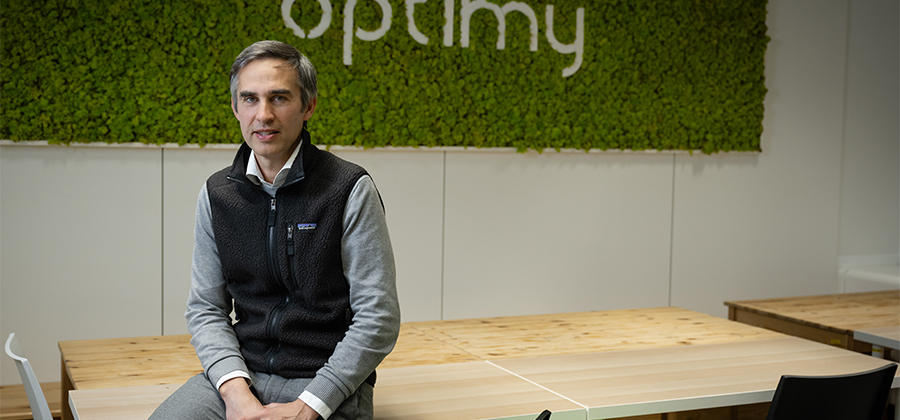
"Originally, I didn't think of myself as a social entrepreneur, even though I was involved in sponsorship. At the request of our customers, my partners and I have developed an entire provision of services that has become the most comprehensive platform on the market," says Kenneth Bérard, CEO of Optimy.
One of these customers was the BNP Paribas Fortis Foundation, which wanted to make a greater social difference and also give these actions more visibility. "It's a must for companies to contribute to society. This generates added value for the company and fuels a positive spiral. But that social impact has to be measurable. How many children have been helped? How many trees have been planted? What effect does this have on employee satisfaction, image and turnover? Our model offers all of this. This means that companies don't have to purchase new modules every time they want to add additional activities. I think that’s our great success factor. We are the market leader in Europe in our sector and the only company operating in both Europe and North America."
Personal support
"Many companies are full of good intentions. They want to have a positive impact on society, but they often lack a good method to do this efficiently," the entrepreneur notes. "They tend to see all their efforts in isolation. The Optimy platform offers a solution for this. It's easy to put together and it's service-oriented. We adapt to the processes of each business unit and company. It doesn't work the other way around," assures Bérard. "Our customers are not looking for technology; they're looking for guidance. We invest in personalisation, and it's paying off, as a customer satisfaction survey shows."
Structuring actions
The first piece of advice that Optimy always gives companies is: don't shred your efforts, they should form a whole. "We recommend that companies structure their actions using our tool. The corporate social responsibility policy must be in line with the company’s values, DNA and broader strategy. And of course, the actions must be transparent and well executed."
The right partner
From the beginning, the connection Optimy had with BNP Paribas Fortis was decisive for the company’s growth. "The fact that the bank follows us has increased our credibility with our partners, investors, customers and also internally. Now it's setting up a factoring service for us to further support our growth."
Optimy's growth was initially supported by cash flow, which is unusual for a technology company. Financing came into play beginning in 2019. That's when a Canadian fund specialising in software as a service (SaaS) companies and affiliated with the prestigious Massachusetts Institute of Technology (MIT) became a shareholder.
Multicultural enrichment
As with increasingly more companies, one of Optimy’s biggest challenges is recruiting new talent. “We've been able to convert that challenge into an asset,” concludes Bérard. "We attract talent from abroad. Sixty people from twenty nationalities work in our Brussels branch. This multiculturalism is a huge enrichment and has helped us break through internationally."
“The corporate social responsibility policy must be in line with your company’s values, DNA and broader strategy”.
